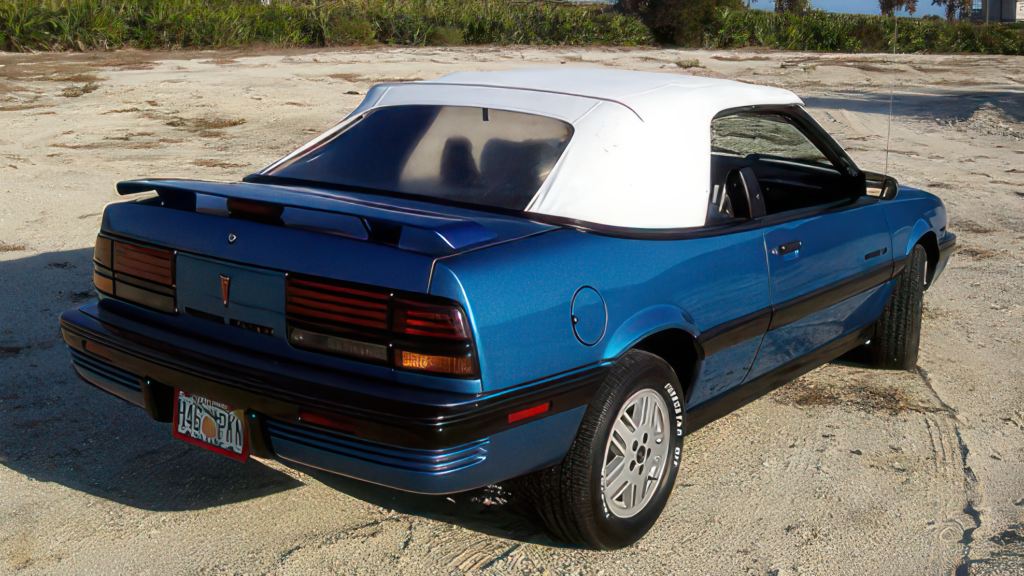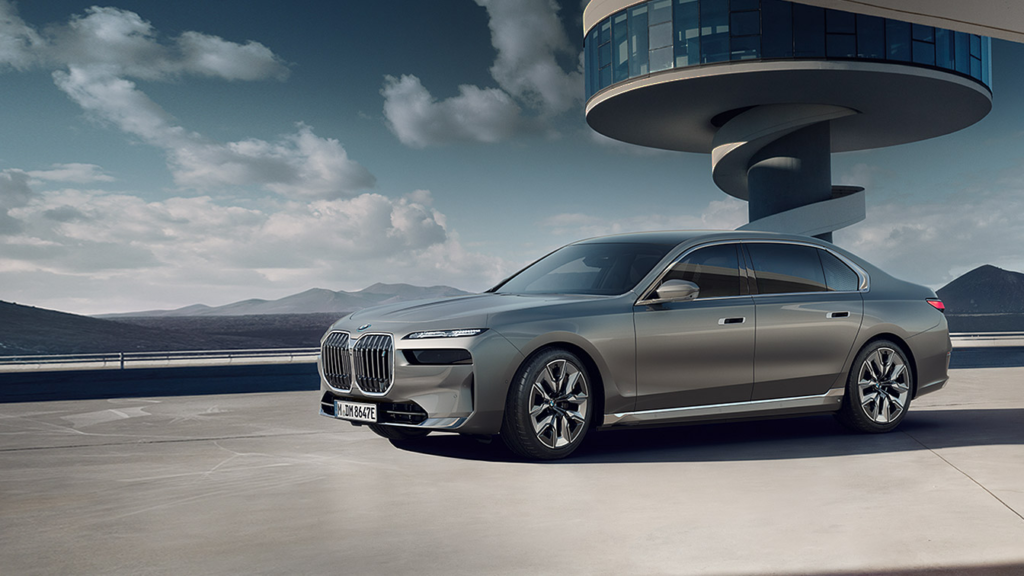The 2024 Cadillac Lyriq is a familiar tune you’ve already forgotten
Today is your moment. You’re living in the EV transition. In 20 years, your only vehicle may be electric. You might even own or want to buy an electric car like the 2024 Cadillac Lyriq right now. That sounds amazing!
But change is painful. It’s made more difficult by unrealistic emissions targets and those unwilling to change. General Motors (GM) sold 134,726 Cadillacs in 2022. Only 122 of those were the Lyriq. It was second only to GMC’s Hummer EV as the worst-selling vehicle in GM’s fleet, according to GoodCarBadCar. Yet the electric Caddy lives on in the 2024 Cadillac Lyriq, which exists, allegedly. Meanwhile, Tesla’s teasing its cheaper Model 2, which may also exist, allegedly.
It doesn’t take a genius to see what’s wrong with this picture. How can a car that cost $2 billion to develop flop this badly? We’ll get to that, but first, a formal introduction to the 2024 Cadillac Lyriq.
2024 Cadillac Lyriq price and specs
Pricing for the 2024 Cadillac Lyriq starts at $59,990. If you can find one, you’ll get a lot of features, even with the base model.
2024 Cadillac Lyriq Tech
- Price: $59,990
- Battery capacity: 102 kWh
- Power: 340 hp (255 kW), 325 lb-ft of torque
- EPA-estimated range: 312 miles (RWD)
2024 Cadillac Lyriq Luxury
- Price: $68,990
- Battery capacity: 102 kWh
- Power: 340 hp (255 kW), 450 lb-ft of torque
- EPA-estimated range: 307 miles (AWD)
2024 Cadillac Lyriq Sport
- Price: $76,990
- Battery capacity: 102 kWh
- Power: 500 hp (255 kW), 450 lb-ft of torque (440 Nm)
- EPA-estimated range: 307 miles (AWD)
Exterior color options
- Argent Silver Metallic
- Stellar Black Metallic
- Crystal White Tricoat
- Opulent Blue Metallic
- Radiant Red Tintcoat
- Emerald Lake Metallic
- Celestial Metallic
- Nimbus Metallic
Exterior dimensions
- Height: 63.9″
- Length: 196.7″
- Width: 86.9″ (including mirrors)
2024 Cadillac Lyriq interior and tech
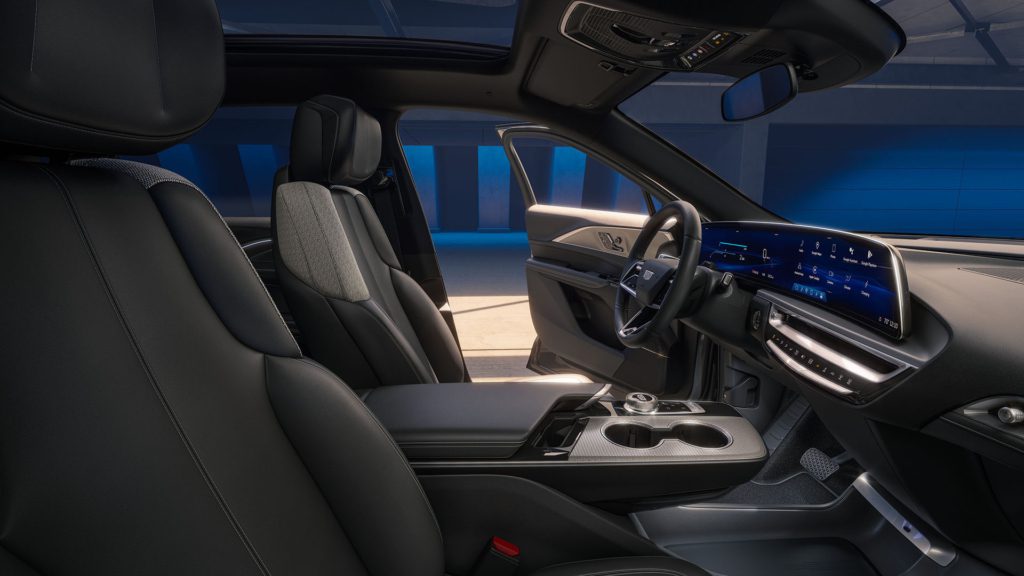
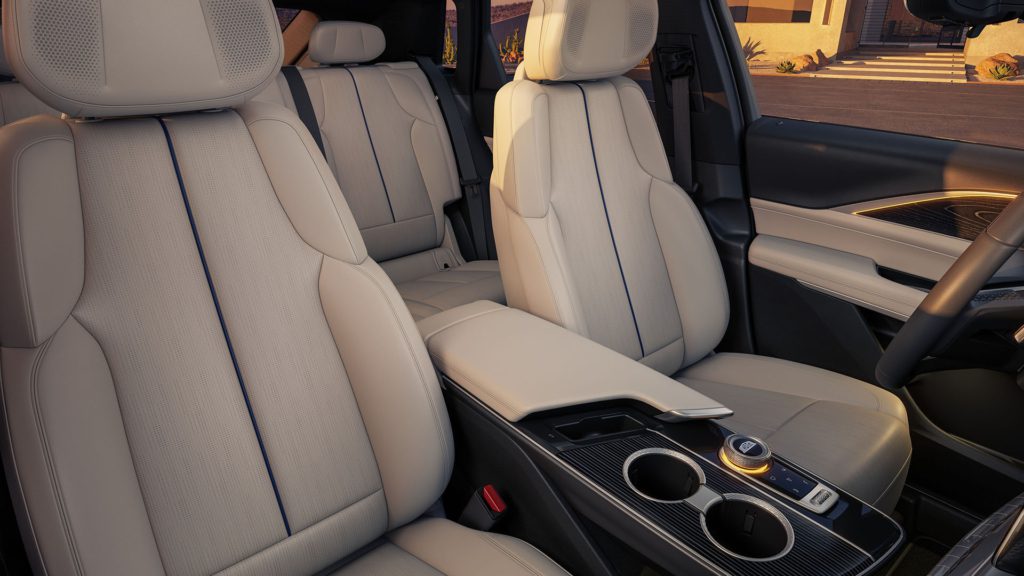

Interior color options
- Noir inteluxe seats, two tone upper bolster accents
- Noir inteluxe seats, santorini blue accents, perforated inserts, dark paperwood trim
- Sky cool gray inteluxe seats, santorini blue accents, perforated inserts, dark PaperWood trim
- Oxford stone full nappa leather seats, garnet accents, perforated inserts, Dark Ash genuine open pore wood trim, backlit door accents
Interior dimensions
- 28.0 cubic-feet, rear seatbacks up
- 60.8 cubic-feet, rear seatbacks down
GM put the Lyriq in luxury with this interior. Ambient lighting and physical buttons are a welcome addition. Being an EV means the inside of the car is roomy by default. The engineers struck a fine balance between minimalism and comfort. From the classic wood trim to the understated seats, the Lyriq’s interior blends the old with the new in a way that’s distinctively Cadillac.
If you’re into tech, the driver assist package gets you automatic e-braking, adaptive cruise control, parking assist, and blind spot steering assist. The luxury and sport trims can use Supercruise, GM’s legally-not-self-driving “hands-free driver assistance technology for compatible roads.” But that requires an additional subscription.
2024 Cadillac Lyriq range and charging
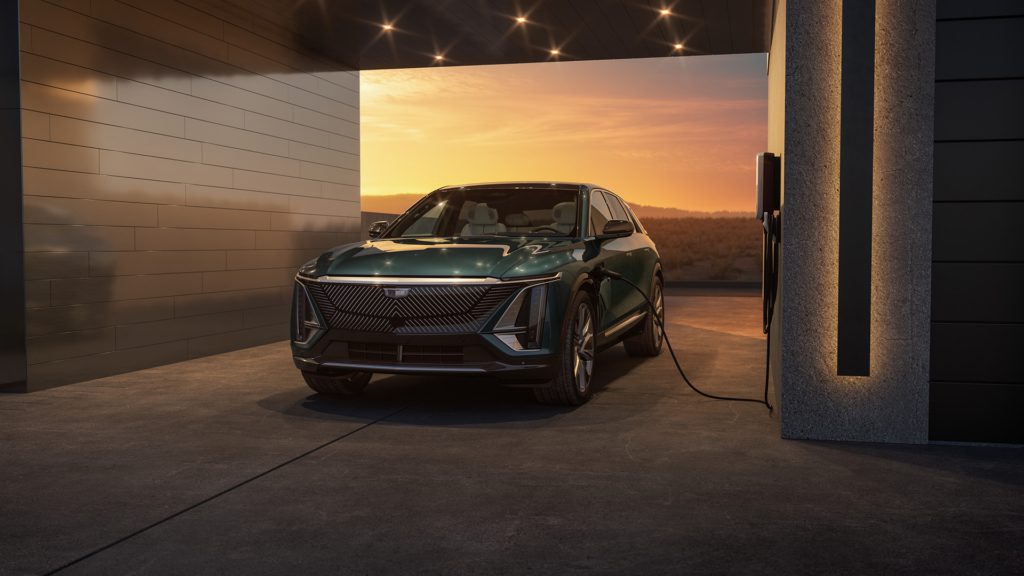
The Lyriq comes with a 22-ft “Dual-Level” charge cord. The vehicle accepts up to 240-Volt/7.7 kW for up to 21 miles of range per hour of charge. As with most EVs, you can add a Level 2 charger for a faster charge – more on that here.
2024 Cadillac Lyriq Tech
- Electric range: 314 miles (RWD)
- Level 2 charging time: Up to 21 miles of range per hour
- DC fast charging time: 77 miles of range in 10 minutes
2024 Cadillac Lyriq Luxury
- Electric range: 307 miles (AWD)
- Level 2 charging time: Up to 21 miles of range per hour
- DC fast charging time: 77 miles of range in 10 minutes
2024 Cadillac Lyriq Sport
- Electric range: 309 miles (AWD)
- Level 2 charging time: Up to 21 miles of range per hour
- DC fast charging time: 77 miles of range in 10 minutes
2024 Cadillac Lyriq powertrain and 0-60 performance
EVs are known to be rocket ships off the line. The Cadillac Lyriq rear-wheel drive (RWD) has a 0-60 mph time of 5.7 seconds. The all-wheel drive (AWD) version beats that comfortably with 4.6 seconds. Of course, 340 hp and a single motor is more than enough for a luxury SUV. If you want to a bit faster, the luxury and sport trims give you 500 hp and 340 lb.-ft of torque.
Lyriq RWD
- Electric motor power: 340 hp (255 kW), 325 lb.-ft. of torque (440 Nm)
- Battery capacity: 102 kWh
- Top speed: 118 mph (190 km/h)
- Acceleration: 6 seconds
- Drivetrain: Permanent magnet electric single-drive motor
Lyriq AWD
- Electric motor power: 500 hp (373 kW), 450 lb.-ft. of torque (610 Nm)
- Battery capacity: 102 kWh
- Top speed: 130 mph (200 km/h)
- Acceleration: 4.6 seconds
- Drivetrain: Permanent magnet electric dual-drive motor
Poor sales numbers
Early production issues put a complete stop to Lyriq deliveries. 2022 saw a vehicle’s software management update, a fix for cracking liftgate panel, and a recall for display issues.
Cadillac is not the only legacy automaker having trouble with EVs. Toyota had to recall its bZ4X electric SUV because, I shit you not, its wheels were falling off. An I Think You Should Leave sketch come to life. Hyundai is currently the subject of an NHTSA probe into “complete power loss while driving.”
Cadillac dealership ultimatum
In 2021, dealerships were offered a take-it-or-leave-it ultimatum: Pay $200,000 to upgrade your dealership to our new electric branding, or sell your dealership for $500,000. The service costs related to EVs are much less than ICE vehicles, so a loss in revenue for the dealership is almost guaranteed.
Much of this underperformance can be attributed to the higher cost of electric cars when compared to gas options.
As Harold Meyerson from The American Prospect recently pointed out, “The big problem for EVs from a price standpoint is that the whole industry has decided that the only way to cater to American tastes is to make their EV fleet out of trucks and SUVs, eliminating the economical sedans that might be affordable.”
But even most of those SUVs and trucks are EV counterparts to premium offerings in each automaker’s respective lineups. Ford has an F-150 Lightning, for example, but it doesn’t offer all-electric variants of the more affordable Maverick and the mid-size Ranger. That may help to explain why the average price of an EV is closer to that of a luxury vehicle than a midrange or economy car across all segments.
That doesn’t even include used cars, which accounted for 74.8% of vehicle sales in the U.S. in 2022, according to the National Automobile Dealers Association (NADA). Reduced volume also means dealerships have to mark up their inventory much higher than MSRP. A car on the lot doesn’t translate to an automatic sale.
EV charging still sucks
The U.S. government has done a great job rolling out EV charging stations. Still, access to charging stations is poor. The average EV charging time is around 40 minutes – and that’s if you find a fast charger. That can be tough considering there are 21 electric vehicles for every charging port available.
That said, EVs can charge overnight and just 4.9% of trips are longer than 30 miles. However, range anxiety is still a stumbling block for potential EV buyers.
The Lyriq exists to meet emissions targets
Let’s be honest for a moment, current EPA emissions targets are next to impossible for manufacturers to meet. Consumer demand is not shifting fast enough. We’re nowhere close to achieving a clean energy grid. Although U.S battery production is on a monumental upswing, a litany of challenges still exist.
The Lyriq is an investor peg on a large board. GM needs to make the transition to electric vehicles without impacting the sales of its ICE vehicles, which are in higher demand and cheaper to build.
It’s hard not to be reminded of the 2006 documentary Who Killed the Electric Car? which detailed the EV1, GM’s first electric car it intentionally sabotaged just so it wouldn’t have to make another one. Rather than selling the car to the people who wanted to buy it, the company opted instead to make life hell for anyone that dared ask to take one home. And because the EV1 was only available as a lease, GM eventually took back its supply and crushed nearly every car.
In other words, the EV1 was less of a commercial product and more of an elaborate ploy to tell the California Air Resources Board (CARB) to go fuck themselves. While I’m not saying that’s the case with the Lyriq, how’s that saying go? History doesn’t repeat itself but the lyrics rhyme. Now we call them compliance cars. You don’t need an industrial compactor to destroy a glorified concept car.
The EV outlook
Global EV sales don’t align with emissions targets. BEVs – those with fully electric powertrains as opposed to plug-in hybrids like the Alfa Romeo Tonale we reviewed – made up only 5.8% of U.S. vehicle sales last year, according to the International Energy Agency (IEA). Norway led the charge with 71% of new car sales being all-electric. EV-Volumes sheds light on the reality of our so-called electrified future:
“In a scenario towards 100% zero-emission global light vehicle sales in 2045 (as an example for the math), the total number of BEVs in operation reaches 1.1 billion, while the total number of vehicles in operation reaches 2 billion in 2045. By then, over 55% of the stock are BEVs but the sobering truth is also that, with current scrapping rates, over 40% of vehicles in operation still need to burn fuels.”
FAQs
When will my Cadillac Lyriq be delivered?
If you were part of the initial sign-up, chances are you’ve already received multiple emails, delaying the delivery of your car. EV tax credit issues and software glitches caused initial poor supply.
Does the Cadillac Lyriq qualify for a tax credit?
The vehicle was not classified as an SUV, but as a car, so it did not qualify for the EV tax credit of ~$7500, further delaying production. Q1 2023 saw 968 Lyriqs and GM expect production to ramp up in Q2 and Q3. So you may get your Cadillac Lyriq as late as November.
Is the Cadillac Lyriq reliable?
This is the first fully-electric Cadillac vehicle. There are bound to be teething issues. The J.D. Power Vehicle Dependability Study ranked the Cadillac brand 9th overall, above BMW and Mercedes Benz. GM continues to invest in and improve its Ultium BEV platform as well.
When will the Cadillac Lyriq be available at a GM dealership?
Delivery to a dealership can take up to 100 days. Production has ramped up this year with 8,000 vehicles expected to be delivered.



